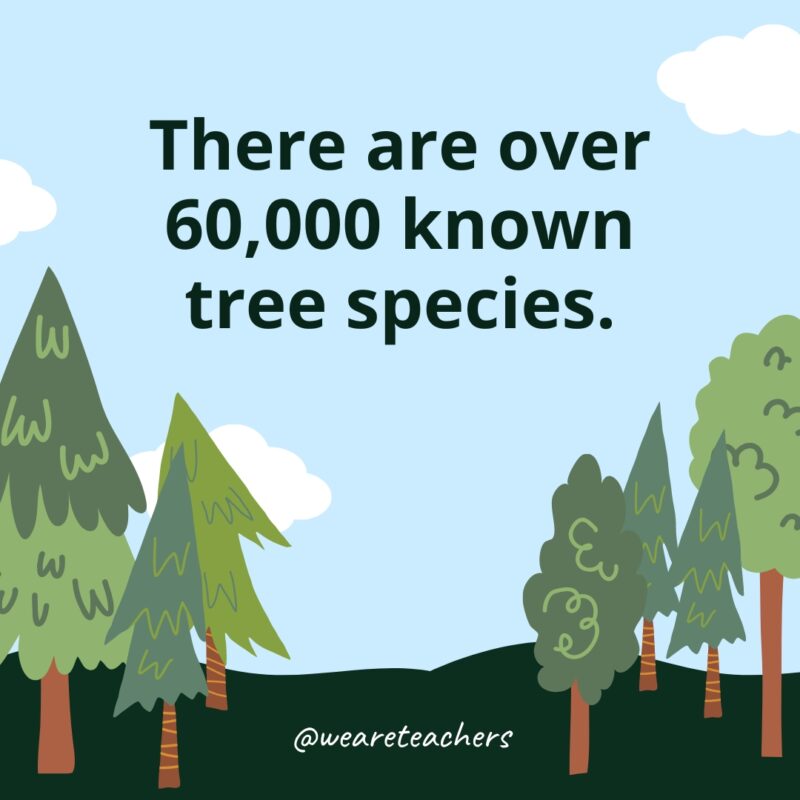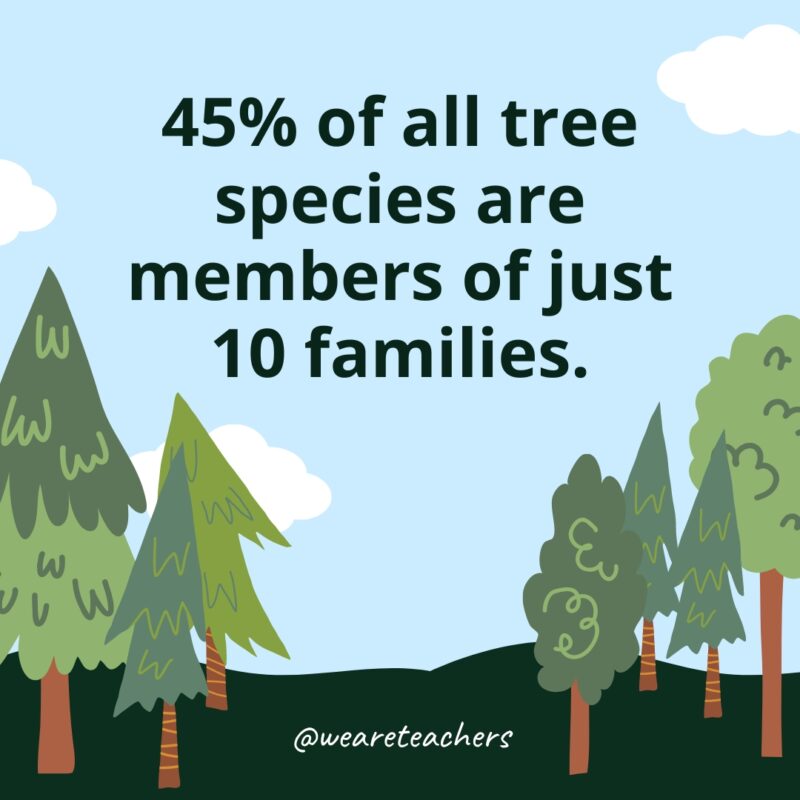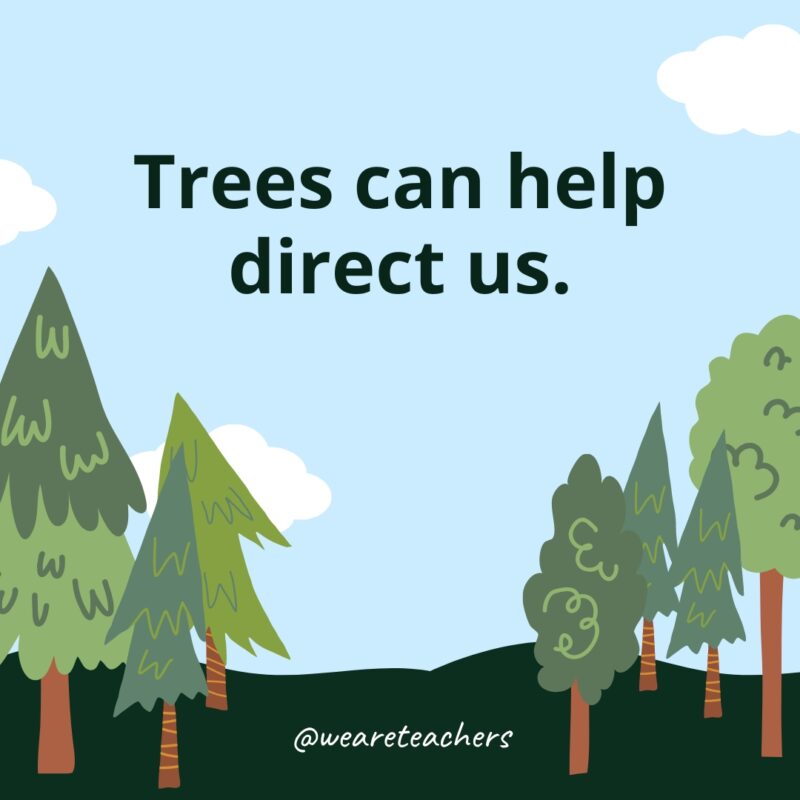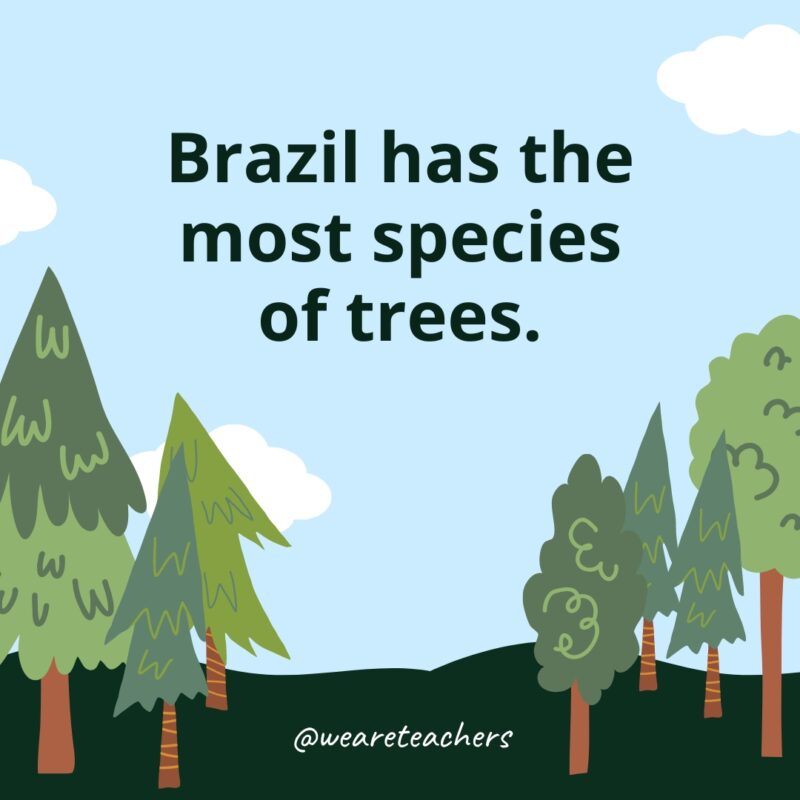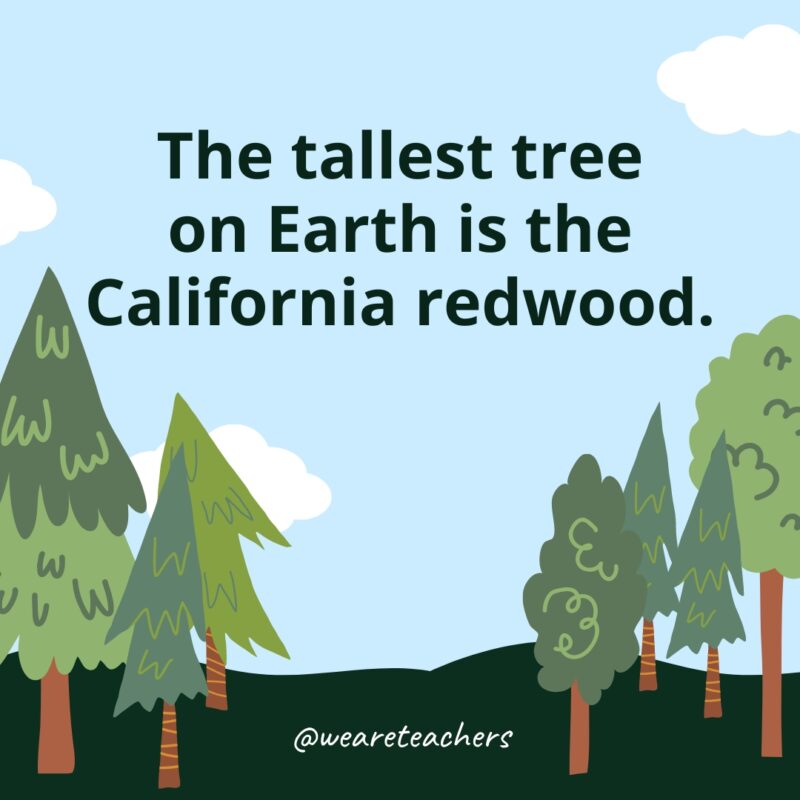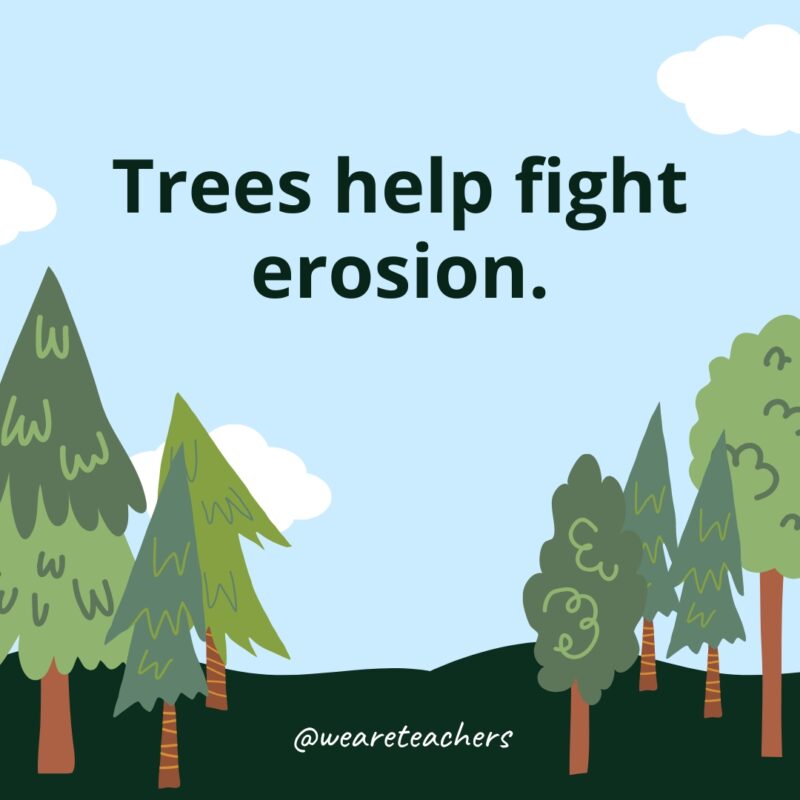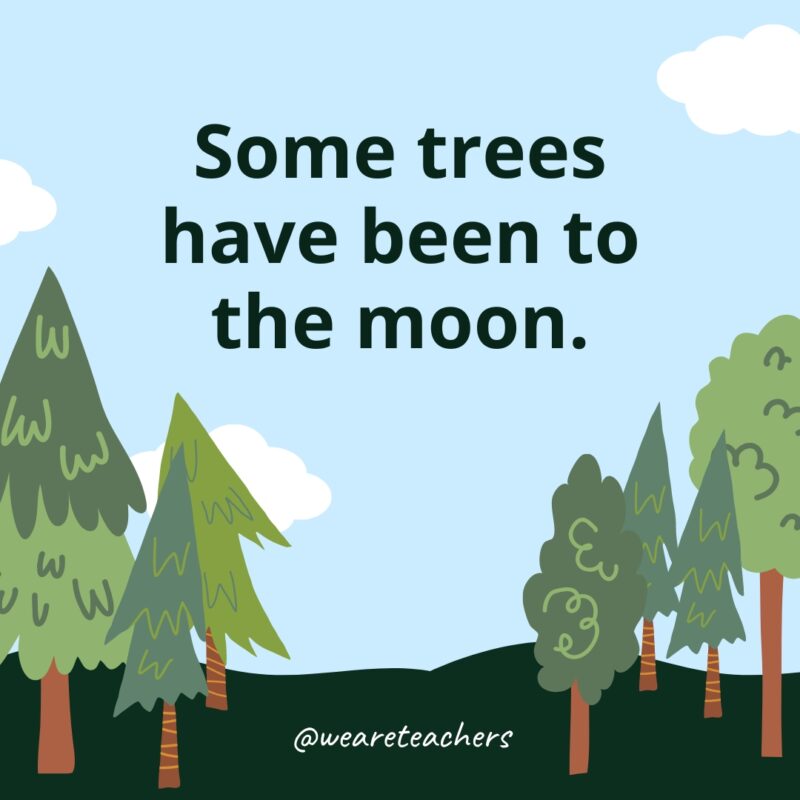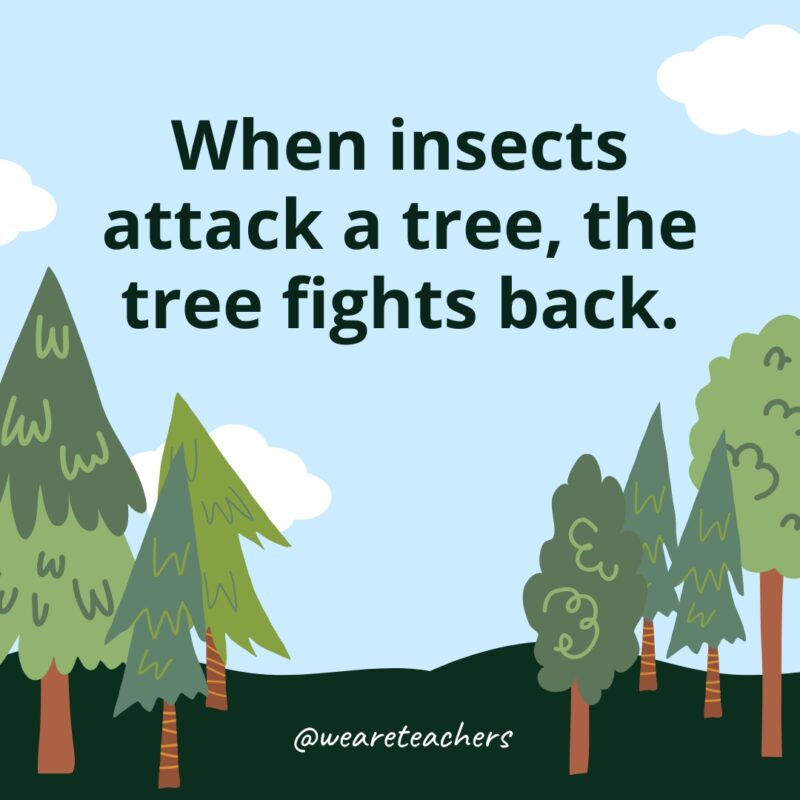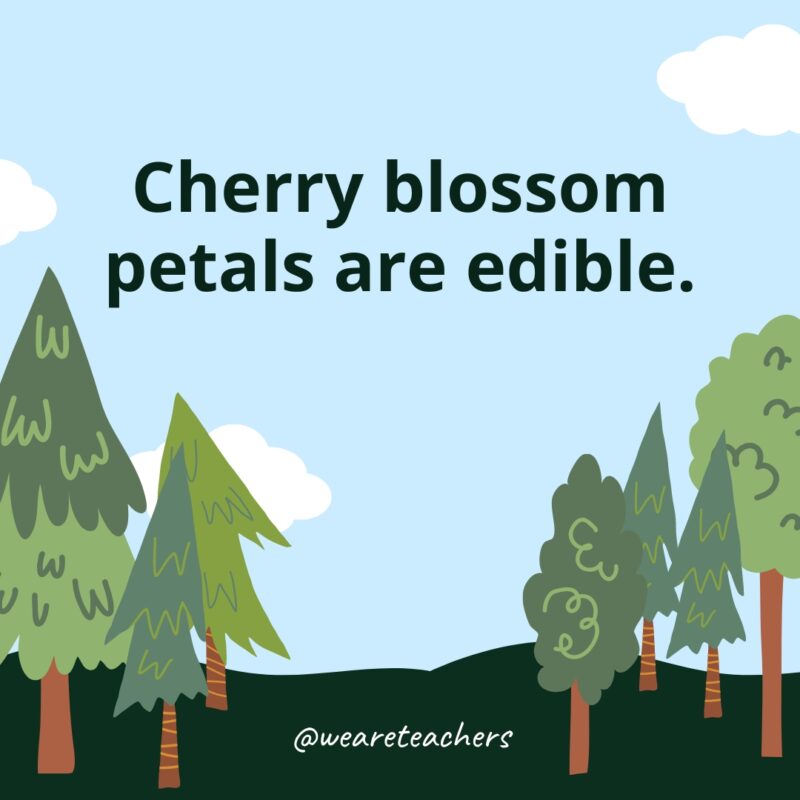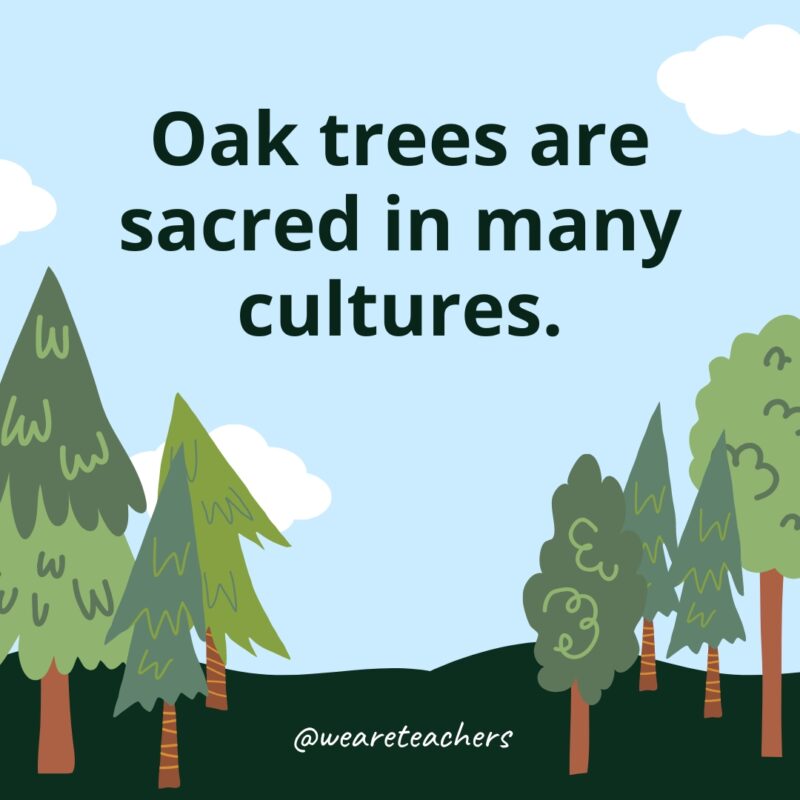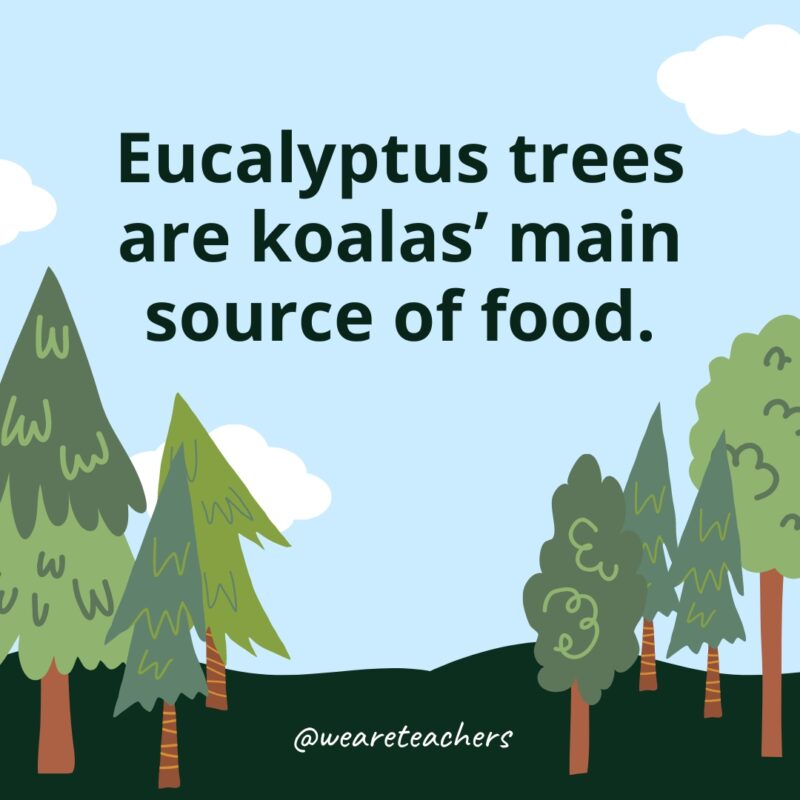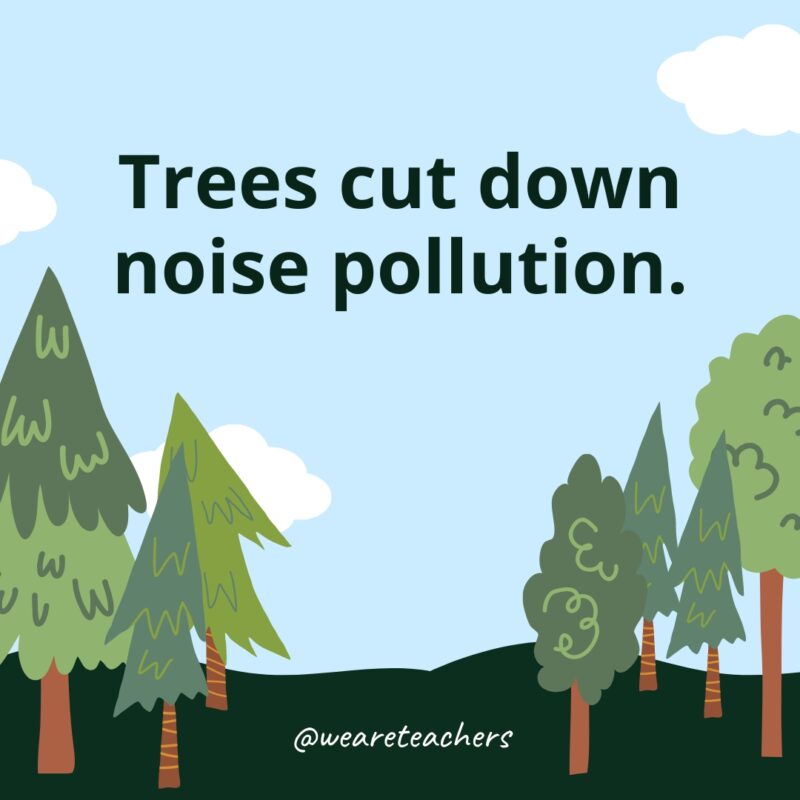Have you ever wondered what the longest living organism on Earth is? If you guessed trees, you are correct! There are so many cool facts about trees that many kids (and adults!) don’t know. Your students will be blown away by these botanical wonders. Check out our favorite facts about trees below.
Trees can help reduce stress.
Being around trees is good for our mental health and social well-being.
Trees help to improve water quality.
Trees actually soak up and filter our rainwater, releasing it into our streams and rivers. They are like Earth’s sponges!
Tree rings can predict climate change.
A tree’s rings reveal its age, but they can also tell when natural disasters have occurred. The rings can be thick or thin depending on how many resources are available in the ecosystem.
Trees never die of old age.
Unlike most other living organisms, trees don’t die when they get old. There are trees in California that are 5,000 years old!
There are over 60,000 known tree species.
Many of these species are at risk of becoming extinct. Scientists are at work identifying which species need immediate attention.
The first known tree was found in New York.
This fernlike plant was called the Wattieza. These now-extinct trees stood 26 feet tall and formed the first forests.
One tree is equal to two central air conditioners.
Trees help to regulate air temperature, which means we don’t need as many carbon emissions.
45% of all tree species are members of just 10 families.
A few of the families are called Leguminosae (legumes), Myrtaceae (myrtle), and Malvaceae (mallows). Try saying that five times fast!
Trees can help direct us.
The branches of a tree show us where we are, much like a compass. For example, branches that point horizontal to the ground are pointing south.
The leaves on a tree absorb sunlight.
This process is called photosynthesis and helps keep the tree nourished and healthy.
Brazil has the most species of trees.
There are over 5,000 species of trees in Brazil.
The tallest tree on Earth is the California redwood.
Redwoods can grow to over 300 feet tall!
Trees help fight erosion.
Their leaf canopies reduce erosion caused by rainwater. Their roots also help to hold soil in place, which also helps fight erosion.
Some trees have been to the moon.
The Apollo 14 mission in 1971 took seeds to the moon to see if they would grow differently there. To everyone’s surprise, the trees grew the same way as they do on Earth.
A large oak tree can drop up to 10,000 acorns a year.
After the tree drops the acorns, they are buried by squirrels and birds for them to eat in the future.
Weeping willow bark has a compound similar to pain-relieving medication.
When male deer grow new antlers, they look for weeping willows to help them with the itchiness of the process.
When insects attack a tree, the tree fights back.
Trees can produce a chemical called phenolics, which keeps those pesky pests away. This helps them protect themselves.
Cherry blossom petals are edible.
Commonly found in Japan, the cherry blossom trees produce a petal that is often used in teas and desserts.
Trees and fungi have a symbiotic relationship.
Fungi reside on the roots of the tree, which helps the tree absorb more nutrients and water from the soil. The trees then help the fungi by providing sugars they absorbed from photosynthesis.
Dead trees serve an important purpose.
Believe it or not, dead trees play an important role in the ecosystem. The dead wood creates a source of nitrogen and microhabitats for wildlife. This includes insects, birds, and mosses.
Oak trees are sacred in many cultures.
People regard the oak as the sacred tree of Zeus in Greek mythology.
There are 400 billion trees in the Amazon rainforest.
The angelim vermelho is the largest tree in the rainforest. At around 290 feet, it juts out above the canopy.
Trees didn’t exist for the first 90% of Earth’s history.
Although Earth is 4.5 billion years old, trees weren’t around for much of its history. Also for much of history, plants only grew a few feet off the ground.
Deforestation kills 15 billion trees each year.
Deforestation is the act of cutting down and clearing forested land.
The dynamite tree has fruit that explodes when it’s ripe.
These fascinating trees also have spikes and toxic sap. People sometimes refer to this tree as monkey no-climb and the sandbox tree.
Pine trees are the most common trees in the world.
These well-known trees exist on every continent except Antarctica.
Eucalyptus trees are koalas’ main source of food.
There are over 900 species of eucalyptus trees in Australia.
Apple trees don’t produce their fruit for four to five years.
The apple tree originated in Southeast Asia.
Trees cut down noise pollution.
They can intercept sound waves and change their behavior based on the sound. Also, trees typically absorb more high-frequency sounds than low frequency.
Humans chop down 3.5 out of every 10 trees and turn them into pulp.
Commonly used products such as toilet paper, toothpaste, and magazines are all thanks to our tree friends.
Do you have a tree fact that wasn’t included here? Share in the comments below!
If you like these facts about trees and want more articles like this, be sure to subscribe to our newsletters.






